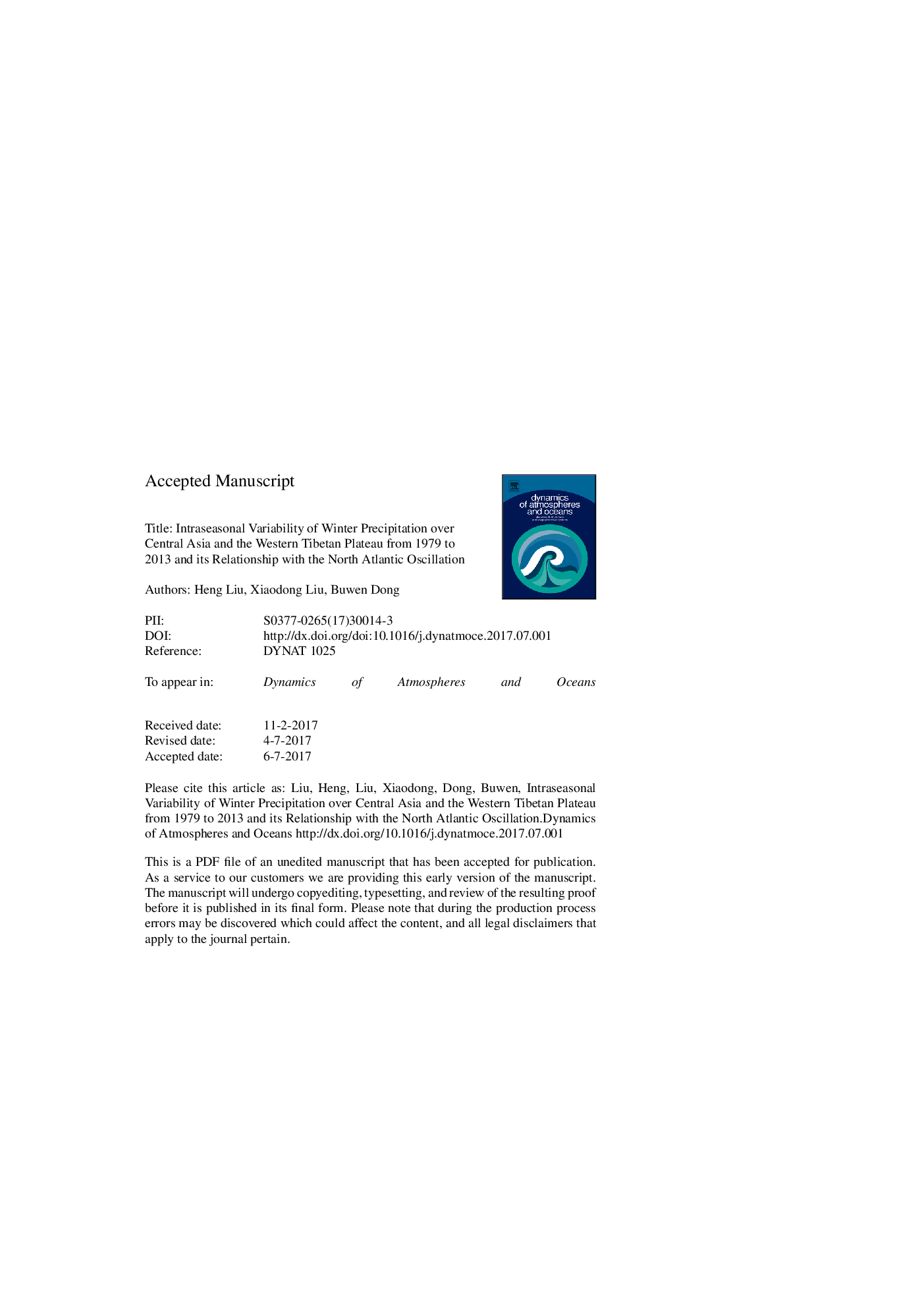| کد مقاله | کد نشریه | سال انتشار | مقاله انگلیسی | نسخه تمام متن |
|---|---|---|---|---|
| 5779150 | 1634210 | 2017 | 28 صفحه PDF | دانلود رایگان |
عنوان انگلیسی مقاله ISI
Intraseasonal variability of winter precipitation over central asia and the western tibetan plateau from 1979 to 2013 and its relationship with the North Atlantic Oscillation
ترجمه فارسی عنوان
تغییرات تنش زودهنگام بارش زمستان در آسیا و فلات تبت غربی از سال 1979 تا 2013 و رابطه آن با نوسانات شمال اقیانوس اطلس
دانلود مقاله + سفارش ترجمه
دانلود مقاله ISI انگلیسی
رایگان برای ایرانیان
کلمات کلیدی
موضوعات مرتبط
مهندسی و علوم پایه
علوم زمین و سیارات
علم هواشناسی
چکیده انگلیسی
Winter precipitation over Central Asia and the western Tibetan Plateau (CAWTP) is mainly a result of the interaction between the westerly circulation and the high mountains around the plateau. Empirical Orthogonal Functions (EOFs), Singular Value Decomposition (SVD), linear regression and composite analysis were used to analyze winter daily precipitation and other meteorological elements in this region from 1979 to 2013, in order to understand how interactions between the regional circulation and topography affect the intraseasonal variability in precipitation. The SVD analysis shows that the winter daily precipitation variability distribution is characterized by a dipole pattern with opposite signs over the northern Pamir Plateau and over the Karakoram Himalaya, similar to the second mode of EOF analysis. This dipole pattern of precipitation anomaly is associated with local anomalies in both the 700Â hPa moisture transport and the 500Â hPa geopotential height and is probably caused by oscillations in the regional and large-scale circulations, which can influence the westerly disturbance tracks and water vapor transport. The linear regression shows that the anomalous mid-tropospheric circulation over CAWTP corresponds to an anti-phase variation of the 500Â hPa geopotential height anomalies over the southern and northern North Atlantic 10Â days earlier (at 95% significance level), that bears a similarity to the North Atlantic Oscillation (NAO). The composite analysis reveals that the NAO impacts the downstream regions including CAWTP by controlling south-north two branches of the middle latitude westerly circulation around the Eurasian border. During the positive phases of the NAO, the northern branch of the westerly circulation goes around the northwest Tibetan Plateau, whereas the southern branch encounters the southwest Tibetan Plateau, which leads to reduced precipitation over the northern Pamir Plateau and increased precipitation over the Karakoram Himalaya, and vice versa.
ناشر
Database: Elsevier - ScienceDirect (ساینس دایرکت)
Journal: Dynamics of Atmospheres and Oceans - Volume 79, September 2017, Pages 31-42
Journal: Dynamics of Atmospheres and Oceans - Volume 79, September 2017, Pages 31-42
نویسندگان
Heng Liu, Xiaodong Liu, Buwen Dong,
